Study shows that the aeolian deposition of Saharan dust in the open ocean influences the migrations of skipjack tuna in the Northeast Atlantic
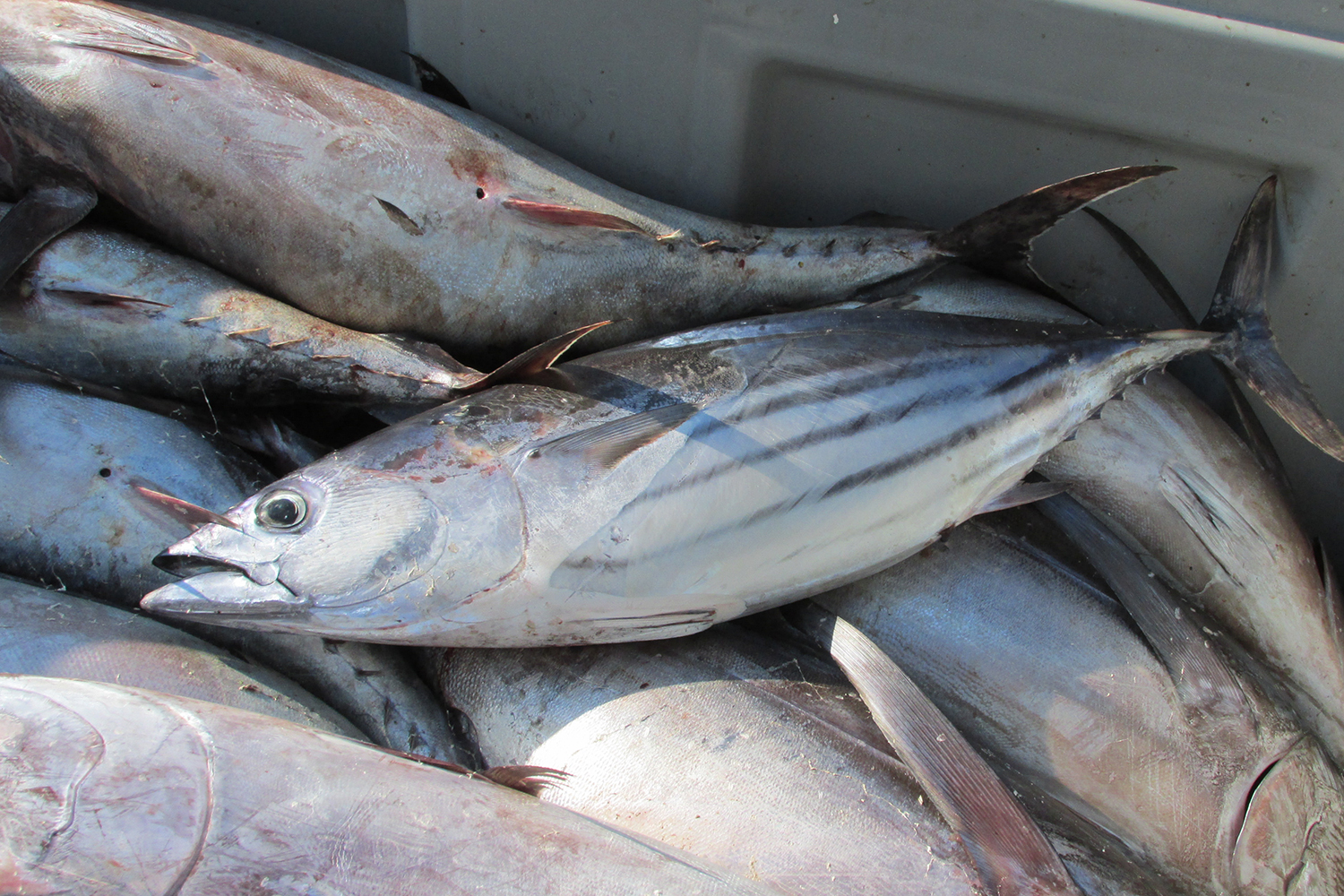
The skipjack tropical tuna (Katsuwonus pelamis) is the most important commercial tuna in the Atlantic, and the main stocks occur in the tropical and subtropical North-East Atlantic. With annual catches of around 253,000 tons/years (2011–2020 average), it accounts for 48 percent of total tuna catches and 56 percent of tropical tuna catches in that ocean, according to the International Commission for the Conservation of Atlantic Tunas (ICCAT) CATDIS dataset.
Atmospheric deposition of aeolian desert dust and other aerosols is a very important transport process for gases and particles from the atmosphere to the terrestrial and aquatic surfaces. This process is a part of the biogeochemical cycling of various chemicals in the Earth system. Gases and particles emitted to the atmosphere from various natural and anthropogenic sources are transported with air masses and undergo dry and wet deposition from the air to water and land. After deposition, some of the chemicals accumulate in the upper layer of soil, while another portion migrates through the terrestrial and aquatic environment.
This deposition influences the open ocean ecosystem and climate. These aerosols provide iron, phosphorus and bio-essential trace elements, which affect the composition and growth of phytoplankton, generating new organic matter that is distributed across the food web. Dust deposition may also modify the composition of phytoplankton, thus affecting the marine microbial biodiversity. Marine phytoplankton responses to dust inputs typically occur within a few days after dust events. These frequent nutrient supplies and phytoplankton production support zooplankton-rich areas, which are optimal for feeding fish larvae, mollusks and cephalopods, and suitable for feeding larger predators across heterotrophic levels up to pelagic high-level hunters like skipjack tuna.
This article – summarized from the original publication (Rodríguez, S. et al. 2023. African desert dust influences migrations and fisheries of the Atlantic skipjack-tuna. Atmospheric Environment
Volume 312, 1 November 2023, 120022) – reports on a study to assess the relationship between the atmospheric inputs of desert dust to the ocean and the fishing catches of skipjack tropical tuna in the Atlantic Ocean, where the major stock of skipjack tuna occurs in waters affected by this dust deposition.
Study setup
For skipjack fishing catch data, two data sets were used. The first data set contained skipjack fishing catches in the Canary Islands, provided by the Fisheries Department of the Canary Islands Government. The second fishery database was provided by ICCAT.
For atmospheric desert dust modeling, column dust load data (blowing desert dust), dust dry deposition and dust wet deposition were obtained from satellite data. Skipjack catches were compared with dust (column dust loads, and dust dry and wet deposition) average distributions and anomalies. These anomalies were calculated as the difference between dust (column dust loads, dry and wet dust deposition) in certain periods (month/year) and the average dust values during the period 2014–2019.
For detailed information on the data sets and analyses, refer to the original publication.
Results and discussion
Skipjack accounts for 48 percent of total tuna catches and 56 percent of tropical tuna catches in that ocean, according to the International Commission for the Conservation of Atlantic Tunas (ICCAT) CATDIS dataset. The main skipjack fishing grounds are located in the North East (NE) Atlantic (Fig. 1A1). About ∼65 percent of the Atlantic skipjack tuna are caught in this region, in a domain that expands along the Gulf of Guinea and equatorial Atlantic, from the equator to the Canary Islands off North West (NW) Africa (Fig. 1A1 and Fig. 1A2).
We found that the migrations and fisheries of skipjack are connected to Saharan dust variability. From boreal winter to summer, skipjack performs an Atlantic-Saharan migration, from equatorial (0-5 degrees-N) to subtropical waters of the North-East Atlantic (regularly reaching open waters off Mauritania ∼20 degrees-N and the Canary Islands ∼28 degrees-N), tracking the seasonal shift of dust deposition in the North-East Atlantic.
The observed long-term associations of skipjack catch with the seasonal cycles, anomalies and meridional variability of dust over the North-East Atlantic, shows that along the year skipjack catches mainly occur in waters affected by massive dust deposition linked (i) to dust wet deposition in tropical waters and (ii) to dust dry deposition in the Saharan desert-dust outflow.
Atmospheric deposition of dust in the open ocean and in upwelling waters contributes to support zooplankton-rich areas, which are optimal for feeding small fish, mollusks and cephalopods, and suitable for feeding large predators, as skipjacks, where they are caught in abundance. The most important fishing area of Atlantic skipjack tuna is located off North West Africa in the waters affected by massive dust deposition that underlies the dusty airstream from the North Africa desert. The role of dust as fertilizing and supporter of phytoplankton and zooplankton-rich areas also has implications for other species of fishing interest, including other tropical tuna (e.g. bigeye and yellowfin), which are often exploited simultaneously with skipjack by the same fisheries.
In-situ measurements, satellite observations, and models (Fig. 1B) show that this region is almost permanently affected by the dusty Saharan Air Layer (SAL) airstream. This refers to the atmospheric plume of desert dust that expands from the inner Sahara Desert across the subtropical and tropical North Atlantic (Fig. 1B). Within the SAL, the aerosol population is dominated by desert dust, frequently mixed with traces of biomass-burning ashes and urban and industrial particulate pollutants.
The SAL dust plume is shown along with dust dry and wet deposition in Fig. 1B-D, which includes the assimilation of satellite and other observational datasets. Due to massive dust deposition, North Atlantic waters underlying the SAL dust plume are richer in iron, silica, aluminum, manganese, phosphorus and other trace metals bio-essential for phytoplankton, in contrast with South Atlantic waters. The resulting asymmetrical distribution of dissolved iron in seawater, in the Northern versus Southern Atlantic, is illustrated in Fig. 1F, according to the NASA Ocean Biogeochemical Model (NOBM).
A Saharan Water Layer (SWL) stream rich in dissolved Fe spreads out under the SAL, from NW Africa to the Caribbean (Fig. 1F) along the northern branch of the Equatorial Current (Fig. 1E). Dissolved iron-rich waters occur off Liberia to Mauritania (Fig. 1F) due to massive desert dust deposition (Fig. 1C-D). Regions where skipjack yearly (2014–2019) catches have exceeded 500 tons/1×1 degree-grid (highlighted in pink color in Fig. 1A2) are mostly located in waters affected by massive dust deposition off NW Africa (Fig. 1A1, 1B-1D).

The major skipjack fishing grounds (annual catches >500 tons/year) are located in (i) NW Africa, off Mauritania (M), Senegal (S) and from Liberia to Guinea (LG), (ii) in South West (SW) Africa, off Angola (A), and (iii) in Equatorial Atlantic (EQA) waters and from Côte d’Ivoire to Benin (CB) and Gabon (G); see (M, S, LG, A, EQA, CB and GT) in Fig. 1A2. The euphotic (the uppermost layer of a body of water that receives sunlight, allowing phytoplankton to perform photosynthesis) waters of these regions receive nutrients from upwelling waters and aeolian dust inputs (Fig. 1). Satellite observations show that these regions also tend to be rich in chlorophyll (-a) particulate organic carbon (Fig. 1E), an indicator of new organic matter linked to enhanced primary productivity.
In the Equatorial Atlantic, where skipjack catches are abundant, such primary productivity is linked to upwelled nutrients (Fig. 1G) supported by nitrogen fixation in turn enhanced by aeolian iron dust inputs (Fig. 1C-D). This results in chlorophyll-rich waters extending along the Gulf of Guinea, from the coastal upwellings of Gabon and the mouth of the Congo River (Vieira et al., 2020) (CR in Fig. 1E) to the west along the Equatorial Current (Fig. 1E). Off NW Africa, chlorophyll-rich waters are observed off Guinea to Mauritania (Fig. 1E), a region that receives nutrients of the easterly boundary upwelling linked to the Canary Current (Fig. 1G), of the Guinea Dome, and by massive deposition of Saharan desert dust (Fig. 1C-D).
From boreal winter to summer, part of the skipjack stock located in equatorial waters performs a northward migratory movement off NW Africa, from the western Gulf of Guinea to the Canary Islands -often reaching Madeira and Azores favored by the seasonal northward shift of warm waters. During this northward migration, skipjack schools congregate in areas with high feeding resources, where they are caught in abundance. We found that this northward migratory movement tends to occur in waters underlying the SAL dust plume, and that skipjack catches are abundant in waters fertilized by massive dust deposition.

Our results indicate that the atmospheric deposition of desert dust aerosols supports phytoplankton and zooplankton-rich areas, optimal for feeding fishes, mollusks, cephalopods, large predators and fisheries. Studies have shown that large amounts of industrial, urban and wildfire pyrogenic and acid aerosols are being globally deposited in the ocean. These inputs enhance, deplete and/or modifying the composition of the phytoplankton communities. A better understanding of the impact of such deposition on the microbial biodiversity is needed to assess the implications regarding carbon dioxide cycling and climate, and zooplanktonic communities and fisheries.
From the 1950s–2020s, yearly catches of Atlantic skipjack have increased from less than 1000 tons to average levels of 250,000 tons per year in recent years. During the 1990s and 2000s skipjack catches were about eight times higher in the Eastern than in the Western Atlantic. Indeed, in the last decade catches in the Eastern Atlantic have accounted for ∼89 percent of total Atlantic catches, a data that highlights the large skipjack biomass off Western Africa, supported by dust fertilization. The role of dust in fertilizing and supporting phytoplankton- and zooplankton-rich areas also has implications for other tropical tuna, such as bigeye and yellowfin, which are often exploited simultaneously with skipjack by the same fisheries. These data show the need to understand how the deposition of desert dust, and wildfires, industrial and urban aerosols modify the composition of phytoplankton and zooplankton. This will contribute to fisheries management and protection of the marine ecosystems from the harmful effects of air pollution.
As far as we know this is the first study showing the connections between atmospheric inputs of desert dust to ocean and the migrations and fisheries of marine species. These results have important implications on our understanding of the influence of atmospheric dust on marine ecosystems and on the management of fisheries.
Perspectives
Study results show that the aeolian deposition of Saharan dust in the open ocean influences the migrations of skipjack tuna in the North-East Atlantic. From boreal winter to summer, skipjack performs what we have called the Atlantic-Saharan migration, from the equatorial to subtropical waters of the North-East Atlantic, tracking the seasonal shift of dust deposition in the North-East Atlantic. Along the year, skipjack catches mainly occur in waters affected by massive dust deposition, at equatorial latitudes in winter, off Liberia to Guinea in spring and off Mauritania to the Canary Islands in summer. Previous studies found that the atmospheric deposition of desert dust in the ocean influenced the composition and growth of phytoplankton, generating new organic matter that is distributed across the food chain.
Results also indicate that this process has an impact on upper trophic levels and fisheries. In addition to coastal upwellings, Saharan dust deposition supports zooplankton-rich areas, optimal for feeding small fish, mollusks and cephalopods, and suitable for feeding large predators, thus affecting the migrations of skipjack tuna. During the Atlantic-Saharan migration, skipjack schools congregate in specific marine areas with high feeding resources, often linked to two key nutrient supplies, massive desert dust deposition, including deposition on upwelled waters, pointing to a strong coupling between aeolian dust inputs and the efficiency of the biological pump to rapidly transfer new organic matter to higher trophic levels.
This study also shows that the deposition of atmospheric aerosols has an impact on the food chain. Nowadays, large amounts of aerosols and other pollutants, linked to wildfires, industry and vehicles, are being transferred from the atmosphere to the ocean. Further research is needed to assess their impact on the composition of the marine microbial community and the implications across the food web.
Now that you've reached the end of the article ...
… please consider supporting GSA’s mission to advance responsible seafood practices through education, advocacy and third-party assurances. The Advocate aims to document the evolution of responsible seafood practices and share the expansive knowledge of our vast network of contributors.
By becoming a Global Seafood Alliance member, you’re ensuring that all of the pre-competitive work we do through member benefits, resources and events can continue. Individual membership costs just $50 a year.
Not a GSA member? Join us.
Author
-
Sergio Rodríguez, Ph.D.
Corresponding author
Instituto de Productos Naturales y Agrobiología, IPNA CSIC, Tenerife, Spain
Related Posts
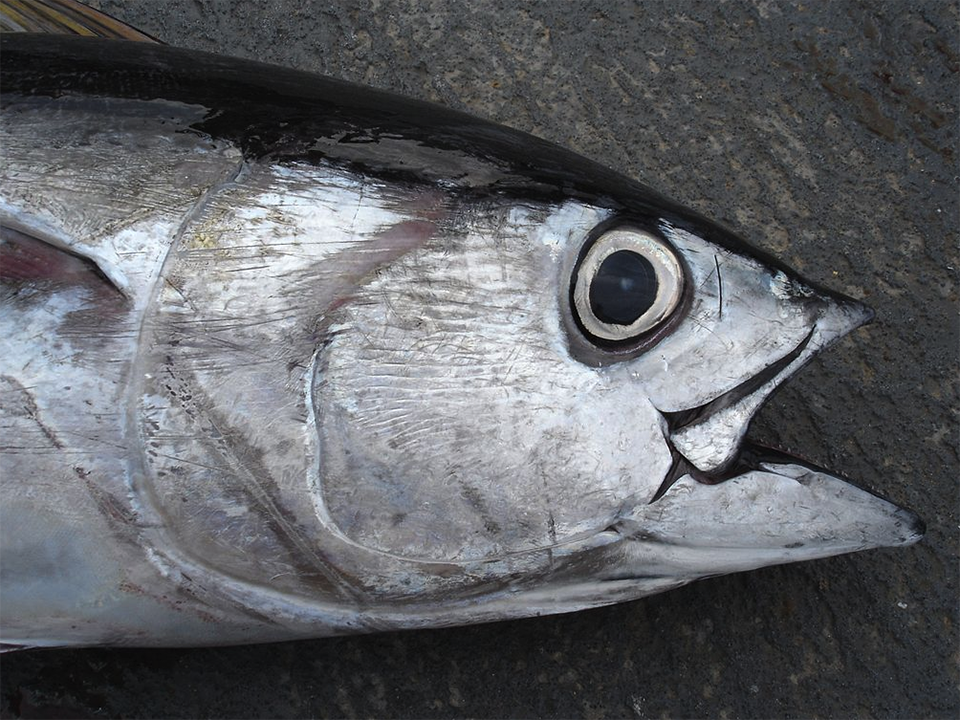
Fisheries
Fisheries in Focus: Marine protected areas don’t help tuna population, new paper shows
Using stock assessment and fishing data, researchers find that the Phoenix Islands Protected Area did not meaningfully increase the tuna population.
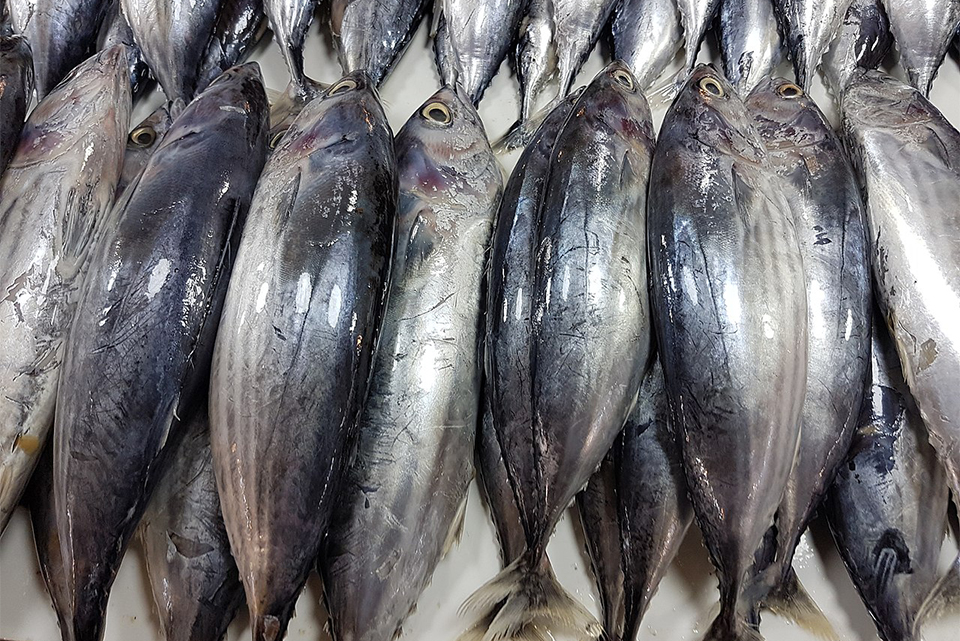
Fisheries
How aging uncertainty of major tuna species impacts the estimation of growth functions
Aging error and age range influences the uncertainty of growth estimation in major tuna species, necessitating improved accuracy of age analysis.
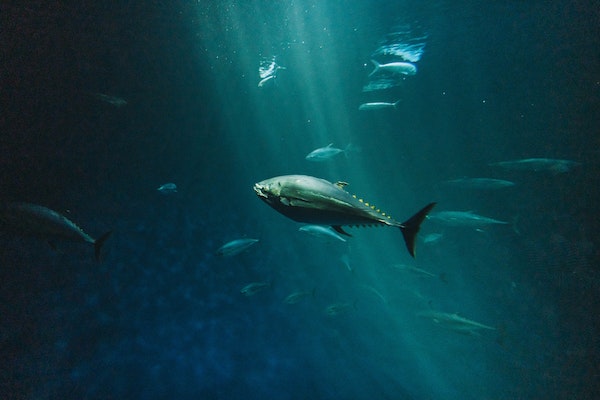
Fisheries
ICCAT adopts modernized fisheries management plan for Atlantic bluefin tuna
Regional fishery management organization adopts modernized fisheries management plan for Atlantic bluefin tuna that could help replenish fish stocks.
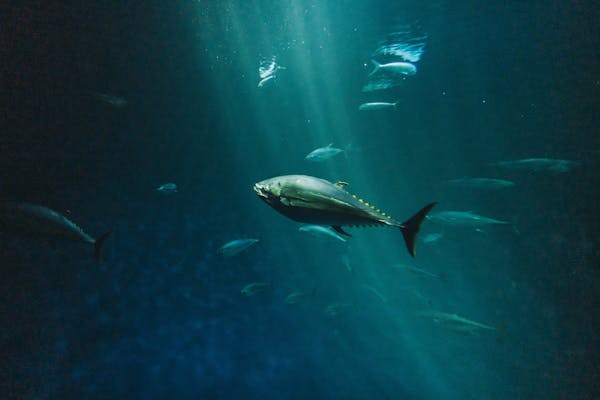
Fisheries
ISSF: Nearly 50 percent of tuna stocks are subject to overfishing
The latest ISSF report reveals that nearly half of major tuna stocks successfully avoid overfishing and meet target biomass levels.



